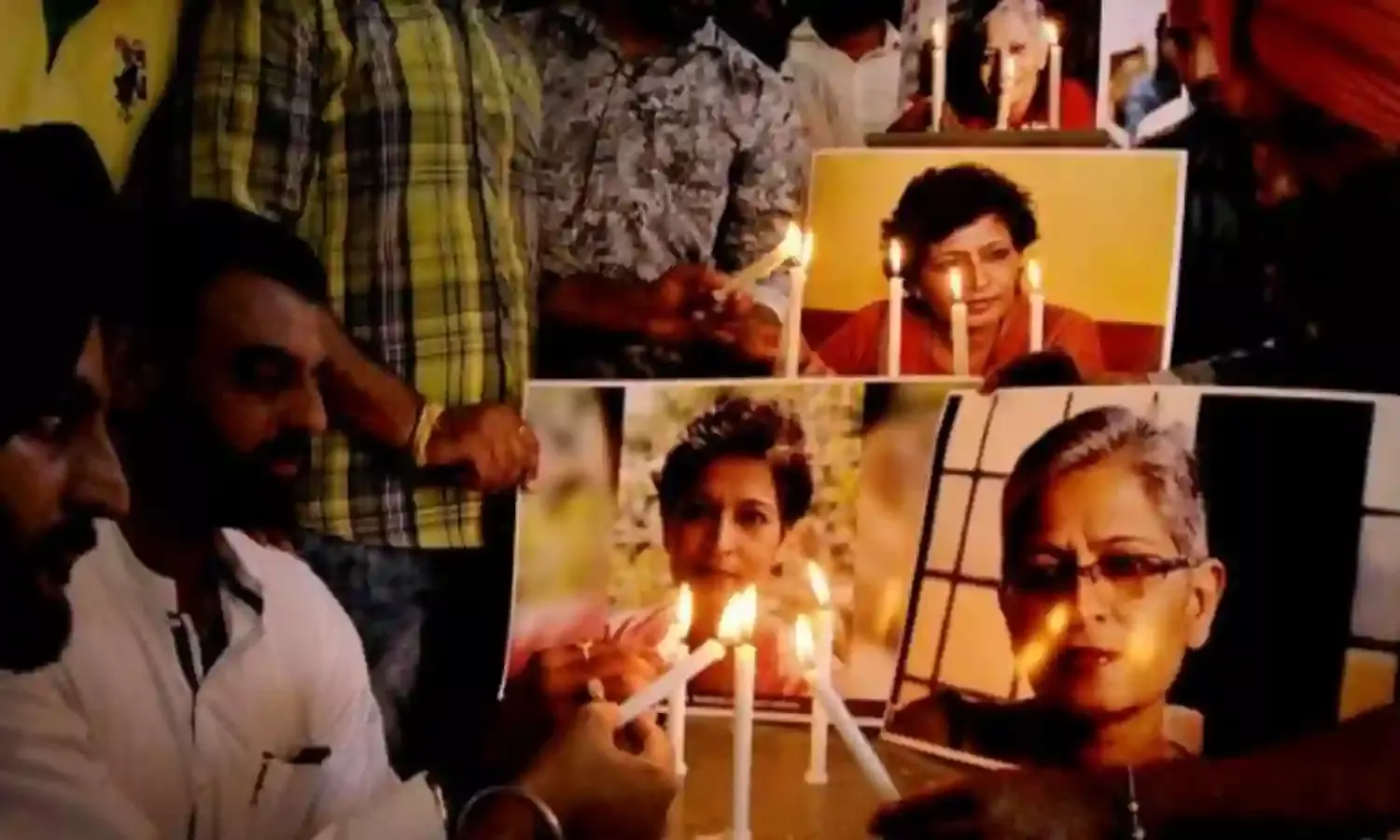Progress In Gauri Lankesh Case, But Will There Be Any Action Against the Sanstha?
Rationalists and Communalism

NEW DELHI: The early investigations of the rationalists in Maharashtra in 2013-15 who were shot dead included Narendra Dabholkar, Govind Pansare and his wife, all of whom were shot with similar 7.65mm country pistols. Surprisingly the lethal pistols were searched for and found by the Karnataka SIT.
Recently, over the last few years, the Maharashtra ATS announced on Friday, that crude bombs were recovered meant to be used for low-grade attacks at public gatherings.
The three accused have been identified as Vaibhav Raut (40) an alleged member of the Hindu Govansh Raksha, an alleged sympathiser of the rightwing outfit of Sanatan Sanstha, whose members are suspected in the murders of Narendra Dabholkar, Govind Pansare, MM Kalburgi and Gauri Lankesh.
Sudhanwa Gondhalekar (39) who hails from Satara, is a member of Shri Shivpratishthan Hindustan, whose chief is Sambhaji Bhide. Pune police have booked Bhide in two criminal cases in connection with the violence near Bhima Koregaon on January 1. The third accused, Sharad Kasalkar (25) was arrested along with Raut from Raut’s Nala Sopara residence residence. The ATS recovered a chit detailing how to prepare a bomb from Kasalkar. On Friday, the ATS questioned around a dozen men from Pune, Satara, Mumbai and Nala Sopara in connection with the case.
In the meanwhile, the Karnataka SIT exposed a covert rightwing Hindutva group which was trained as many as 22 Karnataka youths to use firearms so that they could assassinate intellectuals, the outcome of the nearly yearlong probe by the state police into the murder of Gauri Lankesh.
Police sources said that among the 22 youths trained in the use of firearms, was the man who allegedly shot and killed Gauri Lankesh at the door of her Bengaluru home on September 5, 2017.
The four men who were involved in the recruitment and training process arrested by the SIT are Amol Kale, 37, a former Pune convener of the Sanatan Sanstha-affiliated Hindu Janajagruti Samiti (HJS) and the alleged operations chief for the covert Hindutva group in Karnataka; Sujeet Kumar, 38, a former HJS activist; Rajesh Bangera, a former government employee and Sanatan Sanstha sympathiser who allegedly trained the youths using his licensed weapons; and Bharat Kume, 37, from a fringe Hindutva group from Maharashtra called the Shiv Pratishtan Hindustan, and on whose 3-acre farm near Khanapur the arms training was allegedly provided.
The covert Hindutva group had also established a parallel network in Maharashtra and Goa, which was its primary area of operations, as investigations by the Karnataka SIT revealed. The radical Hindu Sanatan Sanstha is based in Goa. The 12 persons arrested by the SIT in connection of Gauri Lankesh’s murder are: the alleged shooter Parashuram Waghmare, 26, a former Rama Sene activist; Ganesh Miskin, 27, and Amit Baddi, 28, both from Hubbali, and with a history of involvement in communal violence, who are accused of direct involvement in the shooting. They were trained in the use of firearms at the vegetable farm by Bharat Kume alias Tomatar, SIT sources said.
The recruitment tactics of the Sanatan Sanstha and the linked HJS whose members have been arrested for the Gauri Lankesh murder—and a plot to murder the Kannada writer and critic K.S. Bhagwan—are outlined in the statements given to the police by Sujeet Kumar, the former HJS activist who acted as the main recruiter for the group along with Amol Kale, a former Pune convenor of HJS, who was the operations chief. Sujeet Kumar, after police interrogation, stated that, “We used deception tactics, so that if anyone us caught, they alone are implicated and the group is not discovered.”
The most hardcore recruits would then be introduced to Amol Kale and a missing suspect, Nihal alias, Dada, who would decide whether the recruit could be useful to the outfit, and what activities of the covert group they could be deployed for—including the use of guns to kill, and subversive activities like communal riots and bomb blasts—the SIT found.
After arresting Sujeet Kumar in May this year, the SIT found a stash of 22 mobile phones in the kitchen of the house that he occupied in Udupi in coastal Karnataka. When Amol Kale was arrested 21 mobile phones were found. The SIT concluded that, “These phones were used only for one-to-one communication with recruits. The recruits also had phones meant only for communicating with their recruiters. These phones would not be used to communicate with anyone else”—SIT sources pointed out. When the SIT arrested Amol Kale they found in his possession a list of 34 people—mostly writers and rationalists—from around the country, who had been identified as possible targets for assassinations.
The Karnataka State Forensic Science Laboratory has verified that both Gauri Lankesh and Kannada scholar Prof. M.M. Kalburgi, 77, were both killed with the same 7.65mm country made pistol. Kalburgi was shot dead on August 30, 2015.
A comparison of the ballistic evidence from the Lankesh and Kalburgi cases suggests that the 7.65 mm countrymade gun was also used in the shooting of the Leftist thinker Govind Pansare, 81, in Kolhapur, Maharashtra on February 16, 2015. The ballistic evidence also indicates that one of the two guns used in the Pansare murder were also used to kill the rationalist Narendra Dabholkar, 69, in Pune, Maharashtra on August 20, 2013.
The moot question is are these Hindutva outfits like the Sanatan Sanstha, HJS and others going to face any action. Not much has yet happened in Maharashtra where both Narendra Dabholkar and Govind Pansare were killed. Until strict action is taken, more intellectuals and rationalists will be killed. This network has been exposed. But more communal networks exist, and more will be built. Secular groups and forces must unite and agitate against communal killings, and counter divisive and anti-national campaigns and suppression of the right to speak.



